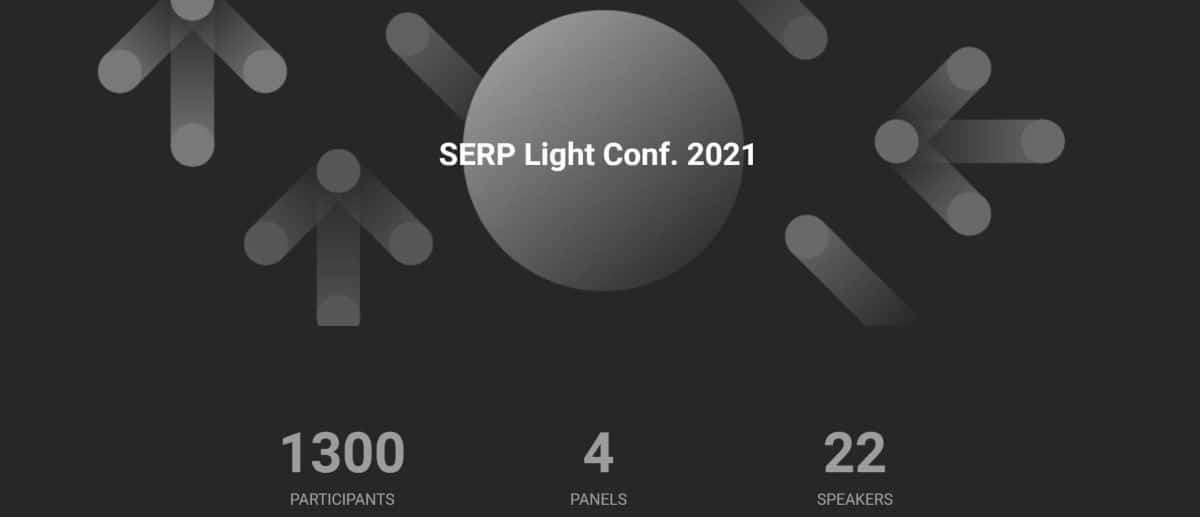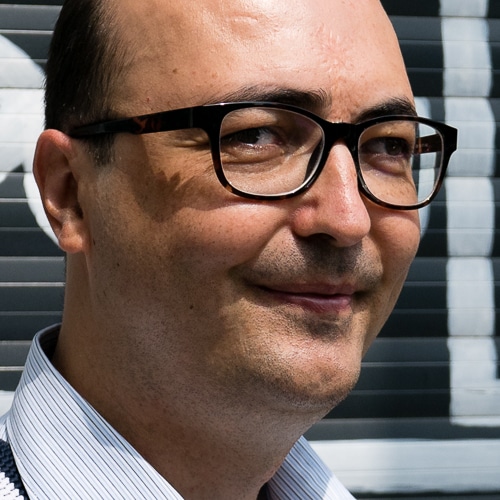On October 20th, took place SERP Light Conf. 2021, online, a conference on SEO, e-commerce, and AI.
The conference was in English. It is available as pay-per-view on SERP Flix | On-Demand SEO & Digital Marketing Lectures.
More conferences – SERP Conf. website.
Below are my notes.
Full list of follow-ups:
- Follow-up: SERP Conf. – Eastern Europe Conference (Inter Expo Center, Sofia, 2025.03.25) – Lumea SEO PPC
- Follow-up: SERP Conf. 2024 (Vienna, Austria, 2024.10.30) – Lumea SEO PPC
- Follow-up: SERP Conf. Sofia 2024 (2024, 18 & 19 April, Sofia – Bulgaria) – Lumea SEO PPC
- Follow-up: SERP Conf. 2023 (Sofia, Bulgaria – October 12, 2023) – Lumea SEO PPC
- Follow-up: SERP Light Conf. 2021 (online – 2021.10.20) – Lumea SEO PPC
Content Marketing – Panel Discussion
Panel 1: Content marketing
- Topic 1: Semantic SEO
- Topic 2: Content Strategy
- Topic 3: Google Patents
- Topic 4: MUM, KELM, LAMDA
Moderator: Fernando Angulo.
Note – SEO pioneer and expert Bill Slawski passes away.
David Amerland: Since 2012, Google has started using a semantic knowledge graph.
The information sphere becomes more complicated, with more sources of information coming online.
Bill Slawski: Information reflects real things. They actually exist.
Dawn Anderson: There are many ways of saying the same things. It is a massive challenge.
Michelangelo can refer to a painter or one of the TMNT.
Bill Slawski: Places like Wikipedia make life easier for LLM tools.
Dawn Anderson: LLMs are actually using Wikipedia-like websites as structured data.
Teodora Petkova: Extracting entities – we should talk about publishing data and the first-party source.
List: LLM & First party data | Curated by Louis Moynihan | Medium
Dido Grigorov: Named entity interaction. What Is Named Entity Recognition? | IBM
Named entity solution. What Is Named Entity Recognition? | IBM
Recognition Process – an overview | ScienceDirect Topics
What is Image Recognition? | IBM
Recognition and Solution – they are related.
Entity – is the most interesting. This is how the Google search engine understands data.
Bill Slawski: The relationship between entities and the search intent.
Search intent can be varied.
What Is Search Intent? How to Identify It & Optimize for It
David Amerland: Intent is always the same – we are looking for a piece of information to get a better understanding of the world we live in.
When we talk to the practical side, two questions:
#1 Who is really my audience?
#2 What does my audience want?
In the real world, we give specific information that has contextual value.
In the digital world, the context is massive, we tend to lose that focus. Thus, the question needs to be very specific. This narrows the content.
Dawn Anderson: The „Harry Potter” query can refer to different things (book, movie, tour etc.).
Teodora Petkova: If we have a word and we are going to create content for it, we are defining our audience and we are getting through the noise to everybody that is already publishing content.
Dawn Anderson: The practical steps – on the website, for technical specifications, you need good information architecture. Look for the searcher’s intent. Crosslink between sections of the website.
Inverted pyramid (journalism) – Wikipedia
Websites tend to be connected entities.
Dido Grigorov: Natural language processing – Wikipedia
NLP errors occur from time to time.
How to find entities? The first results of Google or the content results are a gold mine for entities to be found.
David Amerland: Your information needs to be content-specific. (specific to the context)
Some businesses don’t really know WHO they are, thus they also don’t know WHY they are.
You should look at the mission statement of a company and ask about every piece of information – does it follow the general principle of the company?
Sometimes, companies choose mission statements that sound fancy but don’t explain what they do properly.
If you are laser-focused on your identity, then you are laser-focused on why you do it.
Bill Slawski: For keyword research, do a Google images reverse search. Then look at the categories suggested by Google. It could be a good starting point.
Dawn Anderson: Search engines still use text, and it matters if you use the text on the page or not.
Keyword research is relevant for real-world behavior.
Dido Grigorov: It’s not that relevant if you rank or not for a very specific keyword. You should look at your pages as topical pages.
Google started to combine different types of intent for specific pages.
Covering a single keyword for a page might not be that relevant anymore.
David Amerland: A keyword needs to be part of a global picture. You will need a good company mission, from these some topics follow, and from those the keyword research will be made easily.
Teodora Petkova: Words were used by people before Google. We need to talk to our audience.
Bill Slawski: Google talked about using image recognition.
Dawn Anderson: MUM: A new AI milestone for understanding information
David Amerland: MUM is an extra layer in understanding information.
The aim – a human understanding of information.
Dido Grigorov: If you use an entity, consider explaining it, even if it well known.
Dawn Anderson: Content written by AI is susceptible to algorithm shifts.
Surfer | SEO Content Optimization Platform
Teodora Petkova: The blog should be used for ranking, not for communicating.
Dido Grigorov: It is still not possible for AI to replace real humans.
Bill Slawski: Data shows that if people don’t trust your authority, you’ll likely lose trust given to your brand.
SEO Experiments – Panel Discussion
Panel 2: SEO Experiments
- Topic 1: Topic Clustering with Bertopic
- Topic 2: CTR ranking factor? Engagement rates a ranking factor?
- Topic 3: Social sharing and organic rankings?
- and more..
Koray Tugberk GUBUR | LinkedIn
Moderator: Evgeni Yordanov | LinkedIn
Evgeni Yordanov: A search engine basically uses mathematics.
Koray Tugberk: BERTopic
GenSim-2: Generative AI for Training and Validation | Helm.ai
Dan Petrovic: RStudio Desktop – Posit
RStudio can visualise semantic maps in certain scenarios and find correlations, but not strictly as semantic analysis.
[1810.04805] BERT: Pre-training of Deep Bidirectional Transformers for Language Understanding
Koray Tugberk: Natural language generation – Wikipedia
NLG currently uses ChatGPT 3.5 (most of the time), and texts become repetitive.
It’s useful to look for a solution to avoid repetition.
Dan Petrovic: It’s better to be earlier in the game of NLG, as quickly as you can.
Tomek Rudzki: Google sometimes decides not to index a lot of the pages of websites.
Bing and Yandex – Home | IndexNow.org
It’s a good initiative, even if Google does not join.
Dan Petrovic: User Behaviour Data as a Ranking Signal – Moz
Craig Campbell: By manipulating <title> tags and names in GMB (Google My Businesses) – now GBP (Google Business Profile) -, people got results.
LinkPod | Turn followers into customers with LinkPod
Expired domain might work.
Dan Petrovic: Rejuvenating Old Links
Koray Tugberk: If you update an article, consider also changing the content, not just the modified date.
Google Updates and Penalties – Panel Discussion
- Topic 1: Latest Google Updates
- Topic 2: E-A-T & YMYL correlation to Google updates
- Topic 3: Manual and Algorithm updates
- Topic 4: What to expect of the next updates
Moderator: Eric Enge | LinkedIn
Ulrika Viberg: You have to test how various Google Algorithm Penalties apply to your website, things vary.
Pedro Dias: Our website’s users might not be the same as those of Google.
You should focus on what users want and need, not Google.
Nitin Manchanda: Google wants to deliver quality results for the users.
Eric Enge: Take a look at what your competitors and users are doing.
Borislav Arapchev: Check for Google Search Console messages on penalties, periodically.
To check for a penalty, check Analytics and Analytics from other platforms.
Content, technical – to check on a penalty.
Pedro Dias: MUM: A new AI milestone for understanding information
Algorithm only partially change what SEO is about, it’s not a radical change.
Ulrika Viberg: If you are lucky, you get a notification that a website has penalty.
There are no shortcuts – you need to do the manual work to solve the issue.
Nitin Manchanda: there is no negative SEO effect if you have a website hosted far away than your country, but it affects speed.
Eric Enge: About 45% of traffic on Google goes to paid ads.
Note that Google needs visitors to be happy, if they will not be happy anymore, they will not use Google at all.
Pedro Dias: If you lose rankings on some queries, do a self-assessment: „Should I be ranking for this keyword?”.
Sometimes, more often than not, it’s not easy to fix SEO issues on a website.
Borislav Arapchev: Use tools to analyze user behavior.
The 13 Best Behavior Analytics Tools to Understand Users
Ulrika Viberg: There is a difference between Google Algorithm Updates and Penalties, they don’t refer to the same thing.
Borislav Arapchev: Once every one or two months, grab links pointing to you on SEMRush / Ahrefs and disavow poor quality backlinks.
Technical SEO – Panel Discussion
- Topic 1: Crawling / Rendering & Indexing
- Topic 2: Core Web Vitals
- Topic 3: SEO Automation
Moderator: Murat Yatağan | LinkedIn
Jamie Indigo: Try to focus on people’s, not engine’s experience.
Patrick Stox: Try to fix the things that Google does not solve properly.
The web is a mess, and Google’s job is to make sense of it.
Try to prioritize issues.
Martin Splitt: Don’t fix what is not broken.
For example, if some pages are not indexed, but you still get good traffic, it might not be an issue.
Peter Nikolow: Some people solve problems by creating even bigger issues.
Jamie Indigo: Poor example – „We are going to index all the long-tail keywords”.
Poor results.
Peter Nikolow: SEO is at the end of the cycle, there are various people involved in marketing, and SEO tends to be left at the end.
The key to technical SEO is communication.
For technical SEO: Prioritze, educate and comunicate.
Martin Splitt: Make sure you involve the whole team of stakeholders.
In general, both users and the search engine want new, interesting, specific content. It’s not that easy to build, though.
Justyna Pruszyńska: Both sitemaps and rel=canonical are important.
Patrick Stox: To identify problems, go broad, and then go into specific examples.
Justyna Pruszyńska: Even for a website that has 99% performance of Core Web Vitals, there are other criteria for which to evaluate a website.
Understanding Core Web Vitals and Google search results | Google Search Central | Documentation | Google for Developers
Patrick Stox: Various CMSes treat Core Web Vitals differently.
CDNs do some things for speed optimization for you.
You can already enable HTTP/3 for some systems.
HTTP/3 – Wikipedia
I hope a lot of the things I do will be automated.
Martin Splitt: If content is in the DOM, it will be indexed.
Document Object Model (DOM) – Web APIs | MDN
Peter Nikolow: Take a look at the HTML, content needs to be in the HTML part.
On Wikipedia, on mobile, you need to click on something to display the text.
You should copy their model for „read more”.
Don’t load text with AJAX.
Jamie Indigo: If you love content, just display it.
Peter Nikolow: For noindexing issues – ask yourself – why should that content be indexed?


Pe plan profesional, mă ocup de audituri de site-uri pe partea de SEO și UX (SEO – optimizare pentru motoarele de căutare / UX – uzabilitate – experiența vizitatorilor), și realizez / mă ocup de mentenanță pentru site-uri pe platforma WordPress. Cofondator al lumeaseoppc.ro și al cetd.ro. Blogger pe olivian.ro.
Pe plan personal, caut să cresc, și pentru asta merg la evenimente, fac sport și încerc să trăiesc sănătos, fac voluntariat, citesc.
Detalii despre mine pe profilul de LinkedIn: linkedin.com/in/olivian/